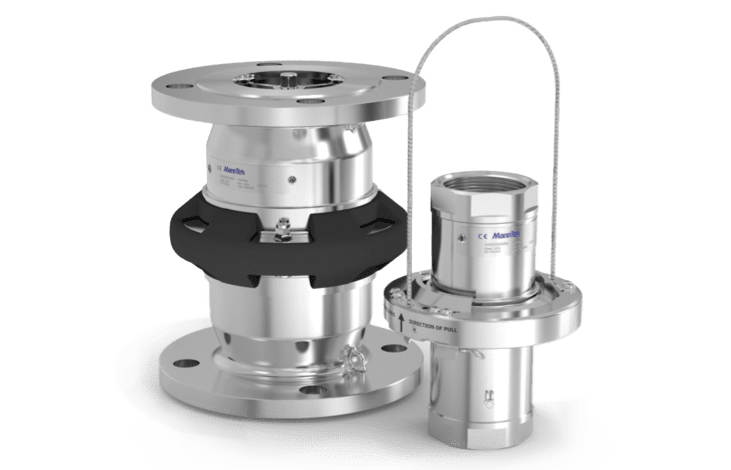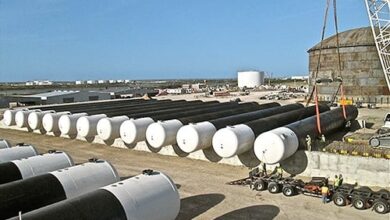What are the Main Types of Breakaway Couplings?

Breakaway couplings are a crucial part of industrial applications where hoses, loading arms, and other equipment are at risk of accidental disconnection. Knowing the different types of breakaway couplings available will help you choose the right one for your application. In this article, we’ll look at what the main types of breakaway couplings are and what they do. For expert guidance, visit breakawaycouplings.com.
1. Industrial Breakaway Couplings
Industrial breakaway couplings are for applications where hoses or loading arms are attached to a fixed point. Here’s how they work:
- Fixed Point Installation: Industrial breakaway couplings are installed at a fixed point, either on a loading arm or within a hose line. The coupling breaks when a predetermined break load is reached, preventing product release.
- Internal Valves to Stop Flow: Industrial breakaway couplings have internal valves that close when the coupling breaks, stopping the flow of product and preventing product release.
- Materials: These couplings are available in various materials, such as stainless steel and other materials for different industrial applications. The material choice is critical for durability and resistance to chemicals or corrosive substances in the environment.
This type of coupling is for applications where safety is key, as it stops product flow when disconnected.
2. Marine Breakaway Couplings
Marine breakaway couplings, also known as marine safety breakaway couplings, are for marine environments, such as ship-to-shore and offshore oil transfer. They are designed for the marine environment and for the safe transfer of hazardous materials at sea.
When looking at what are the main types of breakaway couplings, you need to understand what they do and how they make it safer. Marine breakaway couplings, or the marine version, are for terminal operations during ship-to-shore transfers. These couplings have increased resistance to accidental pull to prevent premature activation in the marine environment. They ensure a controlled disconnection if excessive force is applied and eliminate product release, protecting personnel and the environment. Marine breakaway couplings are also built to last longer to minimise risk by providing the necessary durability and resilience for high-risk marine operations.
- Prevents Premature Activation: Marine breakaway couplings are designed to resist pull and prevent premature activation from vessel movement, waves, or current fluctuations.
- Two Halves with Internal Valves: Marine breakaway couplings break into two halves, each with internal valves that close when the coupling breaks. This is critical for the terminal and to prevent product spillage into the sea.
- Material and Corrosion Resistance: Marine couplings are often made from saltwater corrosion-resistant materials, such as stainless steel, and may have additional coatings for extra durability.
- Installation and Applications: Marine breakaway couplings are installed in marine loading arms and hose lines for ship-to-shore transfers. These couplings prevent environmental contamination and protect marine life in case of accidental disconnection.
3. Emergency Release Couplings
Emergency release couplings provide an extra layer of safety in applications where there is a high risk of equipment disconnection due to an emergency. Emergency release couplings are not dependent on line pressure or a predetermined break load to activate; they can be manually released in an emergency.
- Manual and Automatic Release: Emergency release couplings have both manual and automatic release options, so operators can release the coupling quickly in a critical situation. This is ideal for high-risk environments where response time is critical.
- Internal Pressure Control: Emergency release couplings can withstand internal pressure variations, so they will stay in place in high-pressure applications until an emergency release is triggered.
- No Unwanted Product Release: Emergency release couplings have internal valves to prevent product release during disconnection.
- Industrial Applications: Emergency release couplings are used in industries where equipment protection, downtime minimisation, and safety are critical. Installation in critical connections helps to manage risk where high-pressure flow or volatile products are involved.
4. Passive Release Breakaway Couplings
Passive release breakaway couplings will only disengage when excessive force is applied to the hose line or loading arm. They activate at a predetermined break load and don’t require manual intervention to separate. They are for applications where an automatic response is required to protect equipment and prevent environmental hazards.
- Automatic Separation: Passive release couplings will separate at a set tension, so the system can respond without manual operation.
- Two Strings for Extra Security: Some passive release breakaway couplings have a two-string mechanism for added durability, so they will only activate at the predetermined break load, reducing the chance of accidental release.
- Downtime Minimised: The coupling will prevent product release during disconnection, so it reduces the risk of environmental contamination and costly downtime due to spillage or equipment damage.
- High-Pressure Applications: These couplings can withstand high line pressure without separating until the specified load is reached, so they perform well in harsh environments.
Choosing the Right Breakaway Coupling
When selecting the right breakaway coupling for your application, consider:
- Installation Location: Is the coupling to be installed on a fixed point, marine loading arm, or hose line?
- Environment and Conditions: Choose a coupling made from material suitable for the environment.
- Emergency Response: For systems where automatic separation under excessive tension is enough, passive release or industrial breakaway may be more suitable.
- Unwanted Product Release: Containing internal flow during disconnection is critical to protect personnel and the environment.
Conclusion
Industrial breakaway couplings, marine breakaway couplings, emergency release couplings, and passive release breakaway couplings are all designed for different purposes to keep you safe and protect your equipment in high-risk applications.
With options available for varied applications and environments, choosing the right breakaway coupling helps businesses achieve reliable safety and performance in industries worldwide.
Choosing the right breakaway coupling not only improves safety but also provides control over how disconnections occur, especially in high-risk areas. When you understand the main types of breakaway couplings, you’ll see that each type serves a specific purpose – from industrial applications to marine transfers. Each coupling has a set break load and only activates when a particular force is reached. For marine applications, these couplings offer added resistance to prevent pull from vessel motion and protect terminal operations by staying in place for a longer period. This minimises risks and ensures disconnection only happens under intended conditions, eliminating unwanted product release. By choosing the right breakaway coupling, you can protect personnel, the environment and equipment, and achieve reliable performance across industries.






